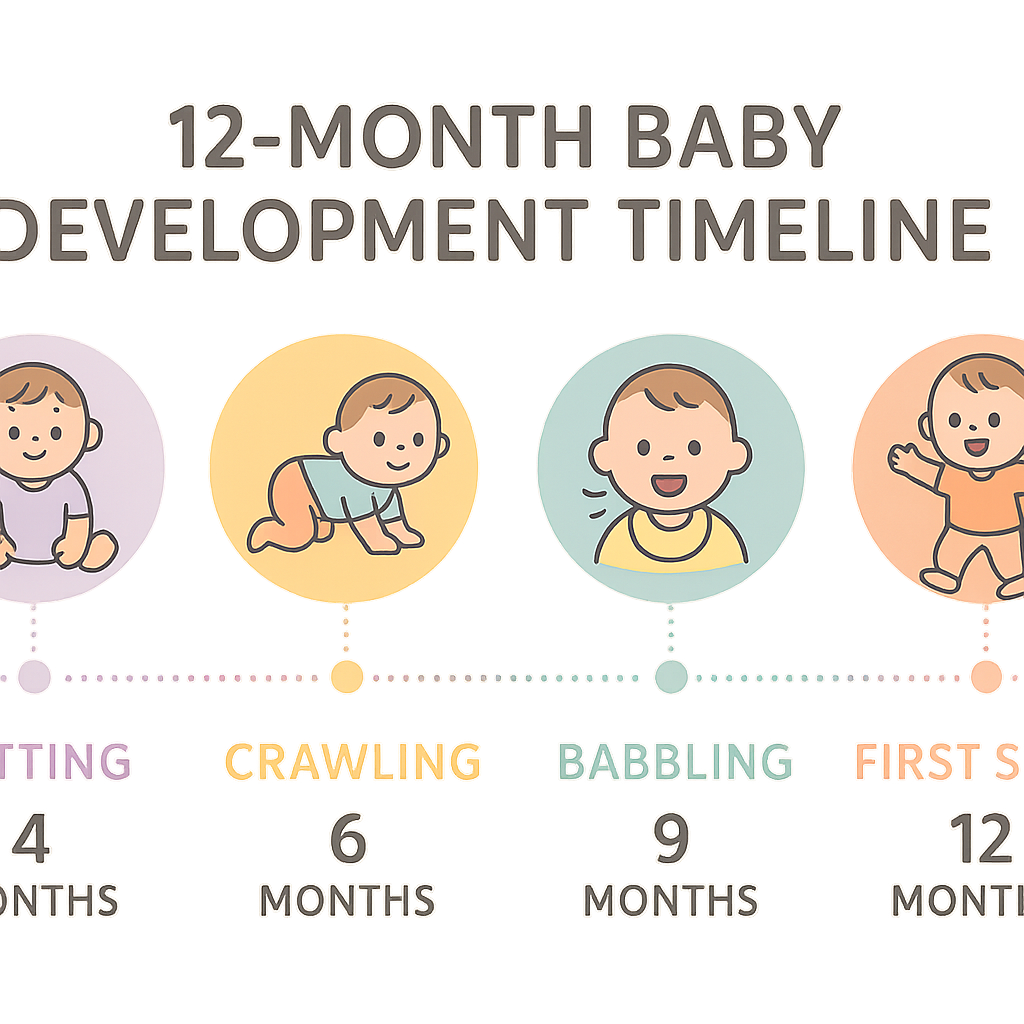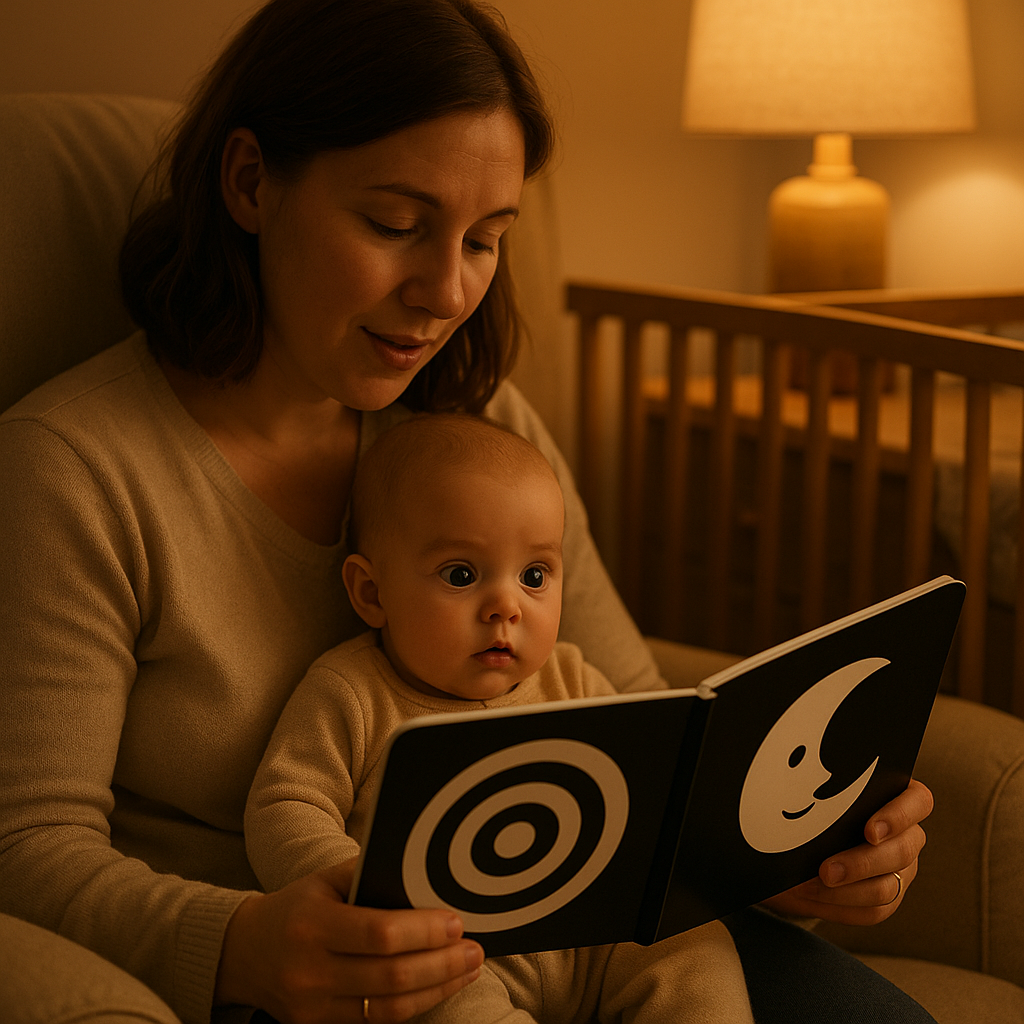Baby development in the first year is a journey of growth, with milestones like walking and talking varying widely. Understanding what’s normal can ease worries and help parents respond confidently to their baby’s unique path. Research suggests only 31% of babies walk by their first birthday, with walking typically occurring between 9 and 18 months. See CDC’s Developmental Milestones for 12 Months. This guide covers typical milestones, reasons for variation, red flags, and support strategies, ensuring you have the tools to nurture your baby’s development.
- What Does “Normal” Baby Development Look Like in the First Year?
- Micro-story: Two Different, Totally Typical Paths
- Why Do Developmental Timelines Vary So Widely—and When Is Variation Healthy?
- Which Crucial Angles Do Standard Milestone Guides Miss?
- What Red Flags Should Parents Watch For, and What Action Steps Work?
- How Can You Support Each Developmental Domain Without Turning Parenting Into a Checklist?
- Your Top Baby Milestone Questions, Answered
- Final Thoughts on Keeping Expectations Real—and Joyful
What Does “Normal” Baby Development Look Like in the First Year?
Baby development follows a predictable sequence, but timing varies widely. Walking typically occurs between 9 and 18 months, and first words may emerge from 8 to 15 months. The key is consistent progress across five developmental domains: gross motor, fine motor, language, cognitive, and social-emotional.
Below is a month-by-month snapshot highlighting typical skills. Remember—skills may show up earlier or later and still be healthy.
| Age | Gross Motor | Fine Motor | Language | Cognitive | Social-Emotional |
|---|---|---|---|---|---|
| 1 mo | Lifts head briefly | Reflex grasp | Startles to sound | Prefers high-contrast faces | Begins to fix gaze on you |
| 3 mo | Pushes up on forearms | Swipes at toys | Coos | Follows moving object | Smiles responsively |
| 6 mo | Rolls both ways; sits with support | Transfers objects hand to hand | Babbles “ba-ba” | Explores with mouth | Laughs, shows joy |
| 9 mo | Sits alone; begins crawling | Thumb–finger (early pincer) grasp | Responds to name | Finds partially hidden toy | Stranger wariness starts |
| 12 mo | Pulls to stand; may cruise or step | Neat pincer grasp, points | Says 1–3 words | Enjoys cause-and-effect games | Waves, claps, seeks praise |
For a deeper dive, download the free CDC “Learn the Signs. Act Early.” checklist or browse daily stimulation ideas in Creating a Brain-Boosting Home for Your Baby.

Micro-story: Two Different, Totally Typical Paths
Ella rolled over at 3 months but didn’t utter “mama” until 14 months. Liam babbled nonstop at 8 months yet waited until 16 months to let go and walk. Both toddlers are thriving in preschool today—proof that progress beats deadlines. `
Why Do Developmental Timelines Vary So Widely—and When Is Variation Healthy?
Variation is driven by genetics, environment, and individual temperament. Just as adults learn at different speeds, babies master skills on personal schedules as per Development Milestones.
Key influences include:
- Biological makeup—birth weight, muscle tone, and inherited traits shape pace.
- Environment—responsive talk, safe floor space, and cultural practices (e.g., baby-wearing) affect which skills develop first.
- Language landscape—bilingual homes may delay first words but enhance long-term flexibility.
- Prematurity—use your baby’s corrected age when tracking milestones if born early.
- Twin dynamics—twins may split focus, with one advancing motor skills while the other excels in language.
For more, see CDC’s Information on Developmental Milestones.
Keep stimulation balanced with the strategies in Overstimulation vs. Boredom and keep screens on pause with Screen-Free Parenting.
Which Crucial Angles Do Standard Milestone Guides Miss?
Milestone charts rarely mention culture, caregiver well-being, and sensory growth. Filling these gaps eases stress and supports whole-child development.
• Cultural context: Constant baby-wearing can slightly delay independent sitting but boosts bonding—track progress within your family’s routine.
• Caregiver mental health: High parental stress predicts fussier babies and slower self-regulation. Practical tips live in Parental Stress: How It Impacts Your Baby’s Brain.
• Sensory milestones: Around 5 months many babies enjoy varied textures and scents. Create a “sensory basket” with crinkly cloth, silicone spoons, and cinnamon sticks to sniff.
• Myth busting: A Pediatrics study of 600 children found no link between walking age and later IQ—early feats don’t equal future genius.
• Long-term trajectory: What counts is the curve—consistent gains, not isolated leaps.
What Red Flags Should Parents Watch For, and What Action Steps Work?
A single missed skill rarely signals a problem; patterns or regression do. Early alerts include:
- No social smile by 3 months
- No rolling or head control by 6 months
- No babbling by 9 months
- No pulling to stand by 12 months
- Loss of any previously mastered skill
If a red flag pops up:
- Document what you see—dates, behaviors, videos.
- Discuss observations at your next well-baby visit or sooner.
- Request formal screening or Early Intervention if advised.
- Keep encouraging effort with Positive Reinforcement: Encouraging Your Baby’s Growth.
“It’s about trajectories, not timestamps.” Early questions never hurt; early help can only help. Early questions never hurt; early help can only help.
How Can You Support Each Developmental Domain Without Turning Parenting Into a Checklist?
Small, joyful daily habits fuel every domain. Choose what fits your rhythm:
- Gross motor: Spread a soft blanket on the floor for supervised tummy time and let curiosity drive movement. Explore more in Baby-Led Play.
- Fine motor: Offer lightweight rattles, silicone stacking rings, and later, bite-size finger foods to refine that pincer grasp.
- Language: Narrate diaper changes, name grocery items, and respond to every coo—research suggests babies exposed to roughly 30,000 spoken words a day build larger vocabularies.
- Cognitive: Hide a toy under a cloth and watch your baby search; rotate playthings to keep problem-solving fresh.
- Social-emotional: Practice “serve-and-return” interactions—mirror your baby’s grin, wait for a wiggle, answer back. Quality moments beat marathon hours; see Quality vs. Quantity Time.

Your Top Baby Milestone Questions, Answered
-
What are the 5 developmental domains?| Gross motor, fine motor, language, cognitive, and social-emotional. Together they paint a full picture of growth.
-
How much variation is normal?
A lot. Roughly 25 percent of perfectly healthy babies take their first steps after 15 months. -
What if my baby skips crawling? Usually fine. Some babies bottom-shuffle straight to walking; just ensure other motor skills progress.
-
Do early milestones mean gifted?
No scientific link exists. Early talkers aren’t guaranteed prodigies—learn more in Is Your Baby Gifted?. -
When should I worry?
Persistent lack of progress or loss of skills warrants a pediatric check-in. Trust your instincts.
Final Thoughts on Keeping Expectations Real—and Joyful
Milestones are guideposts, not grades. By focusing on steady progress, understanding healthy variability, and nurturing each domain with loving attention, you create the rich environment every developing brain craves. Download our free tracker and continue the journey with Baby Routines: Do They Boost Brain Development?. Celebrate each small triumph—your calm confidence is the greatest gift your baby will feel today.